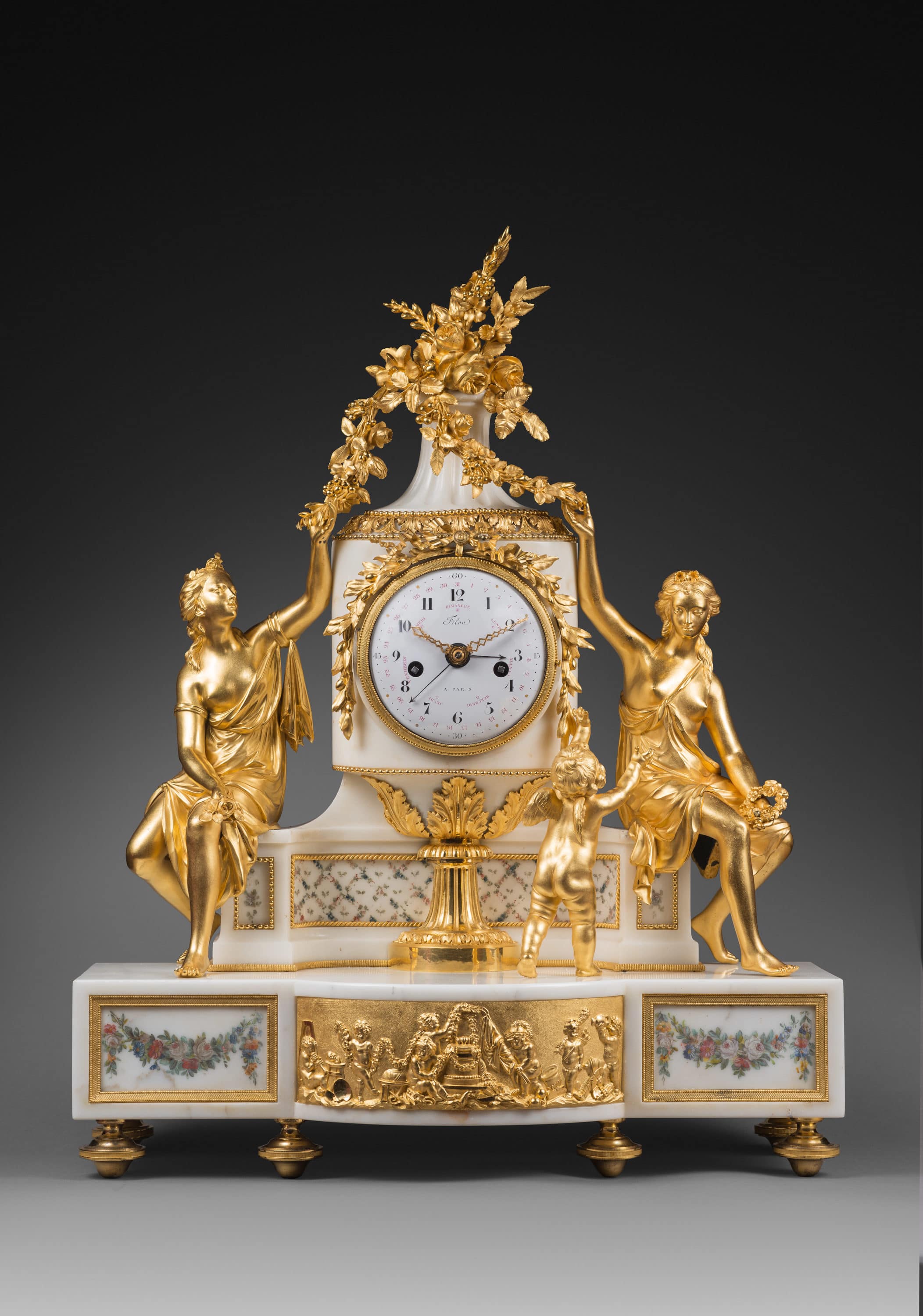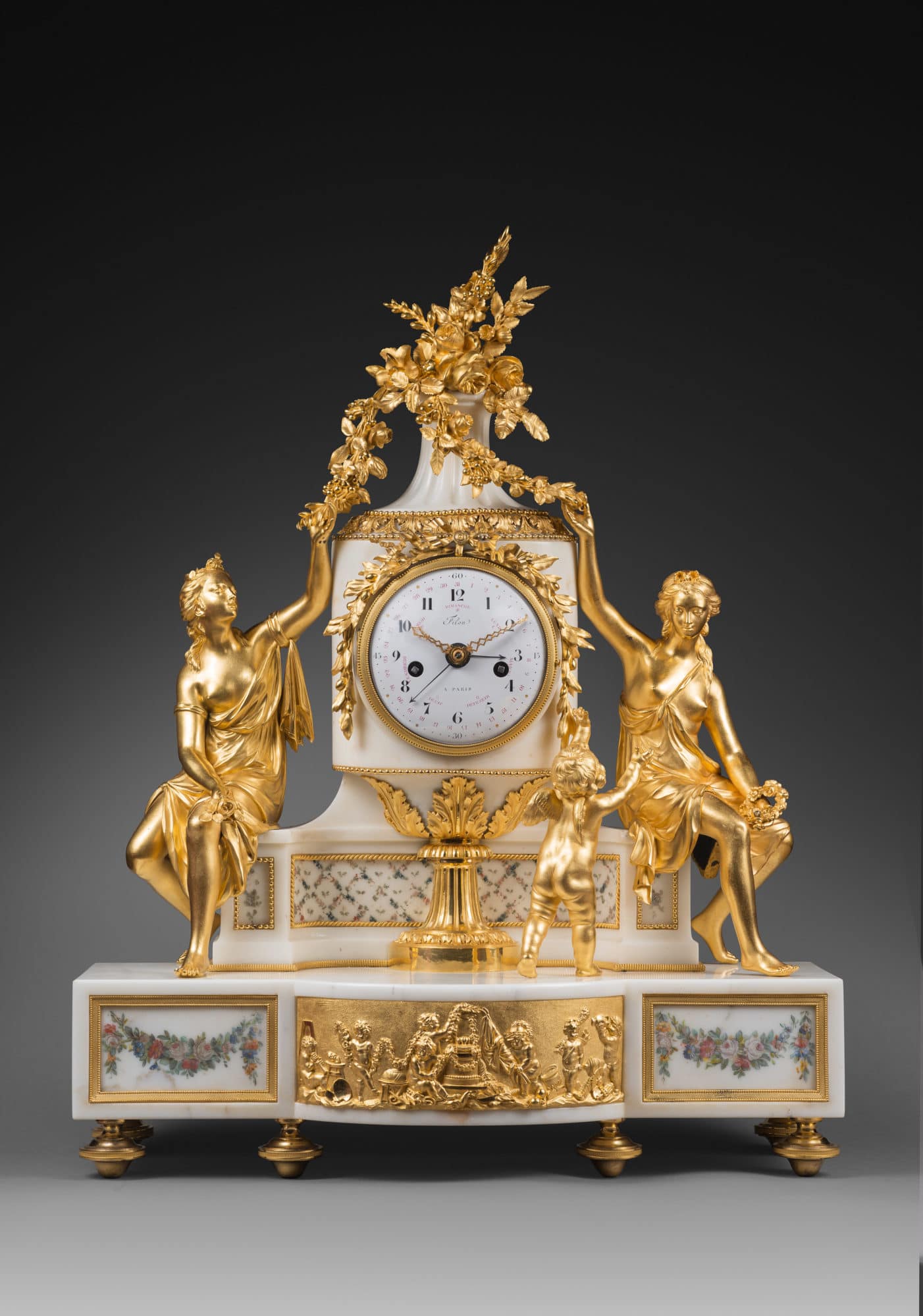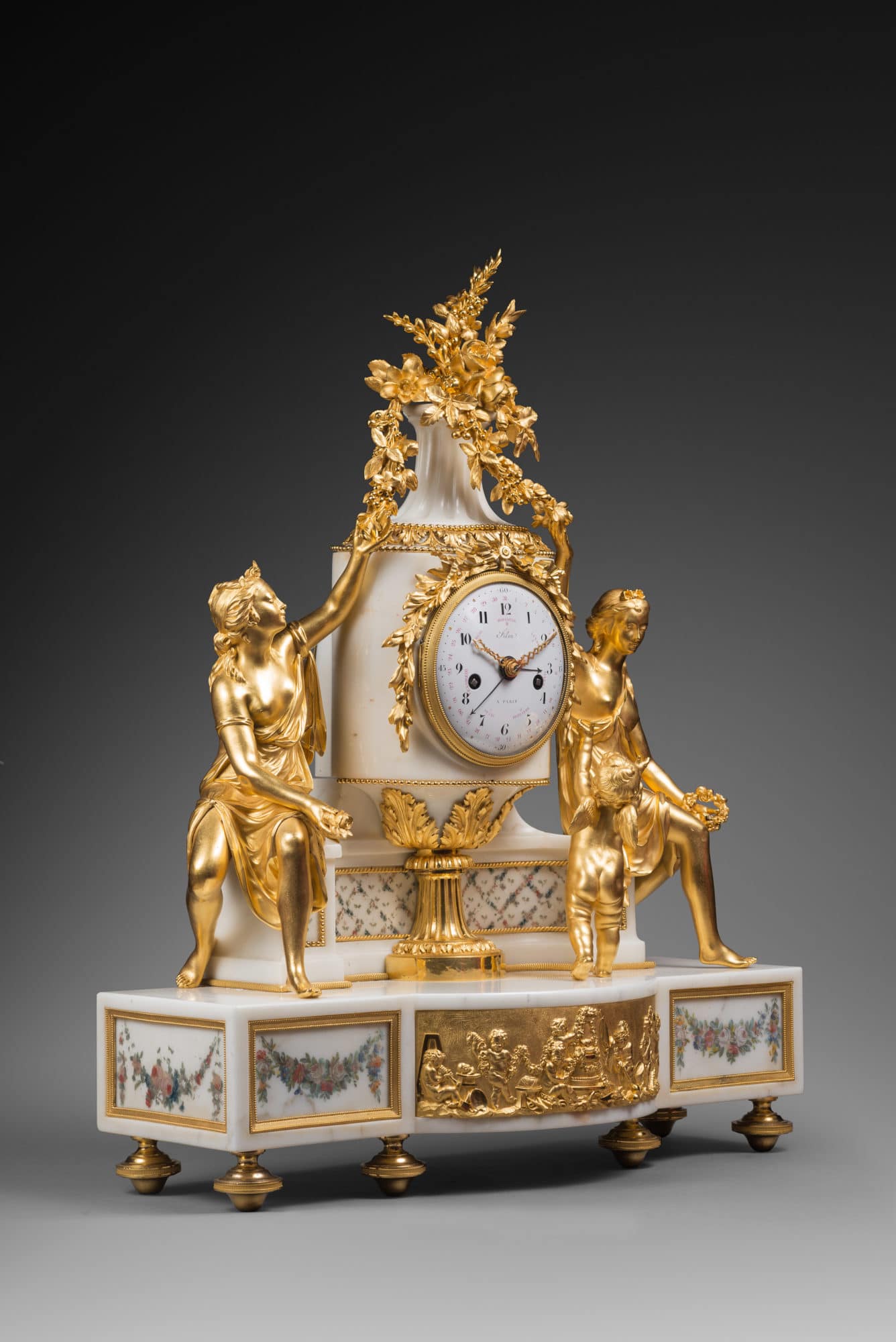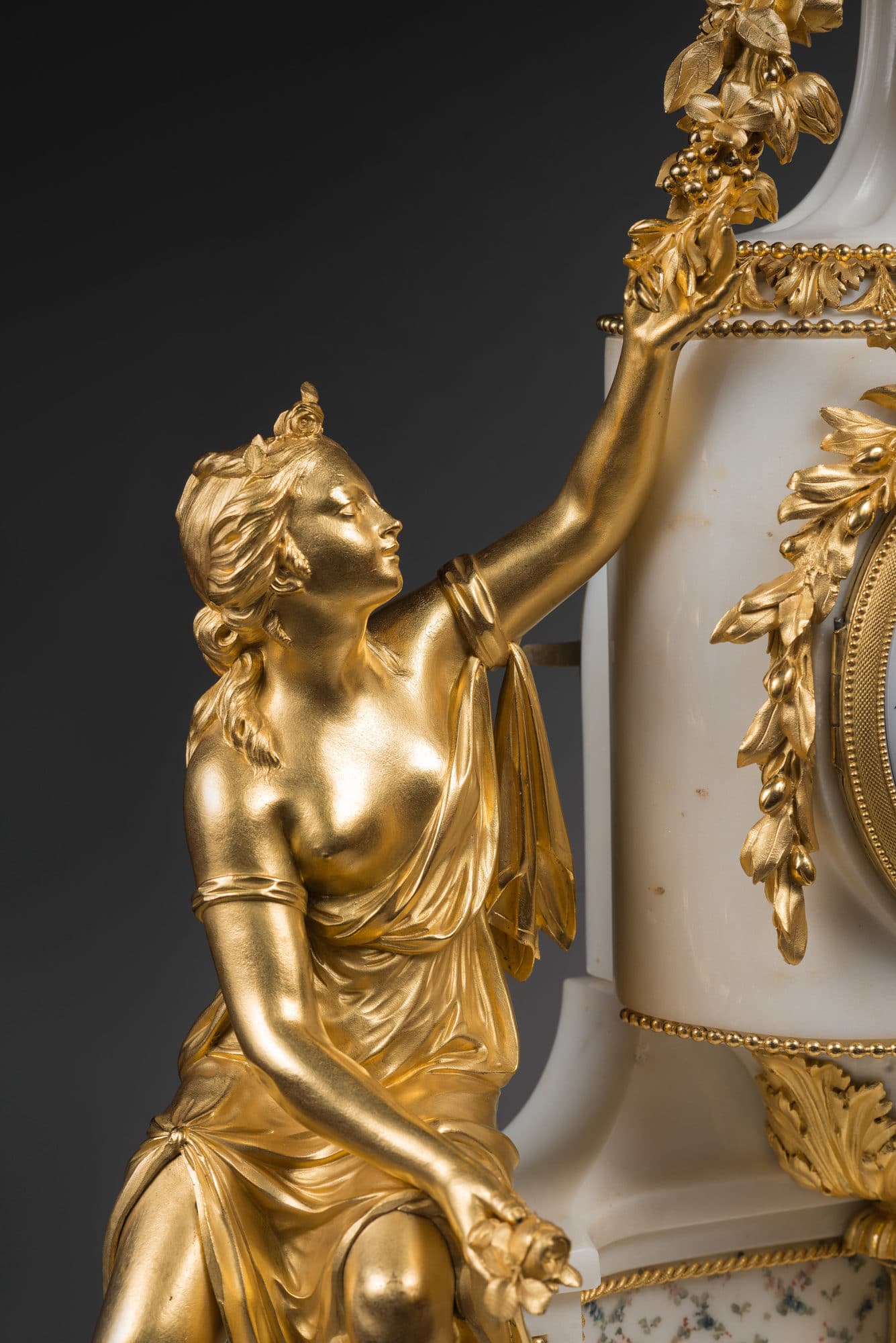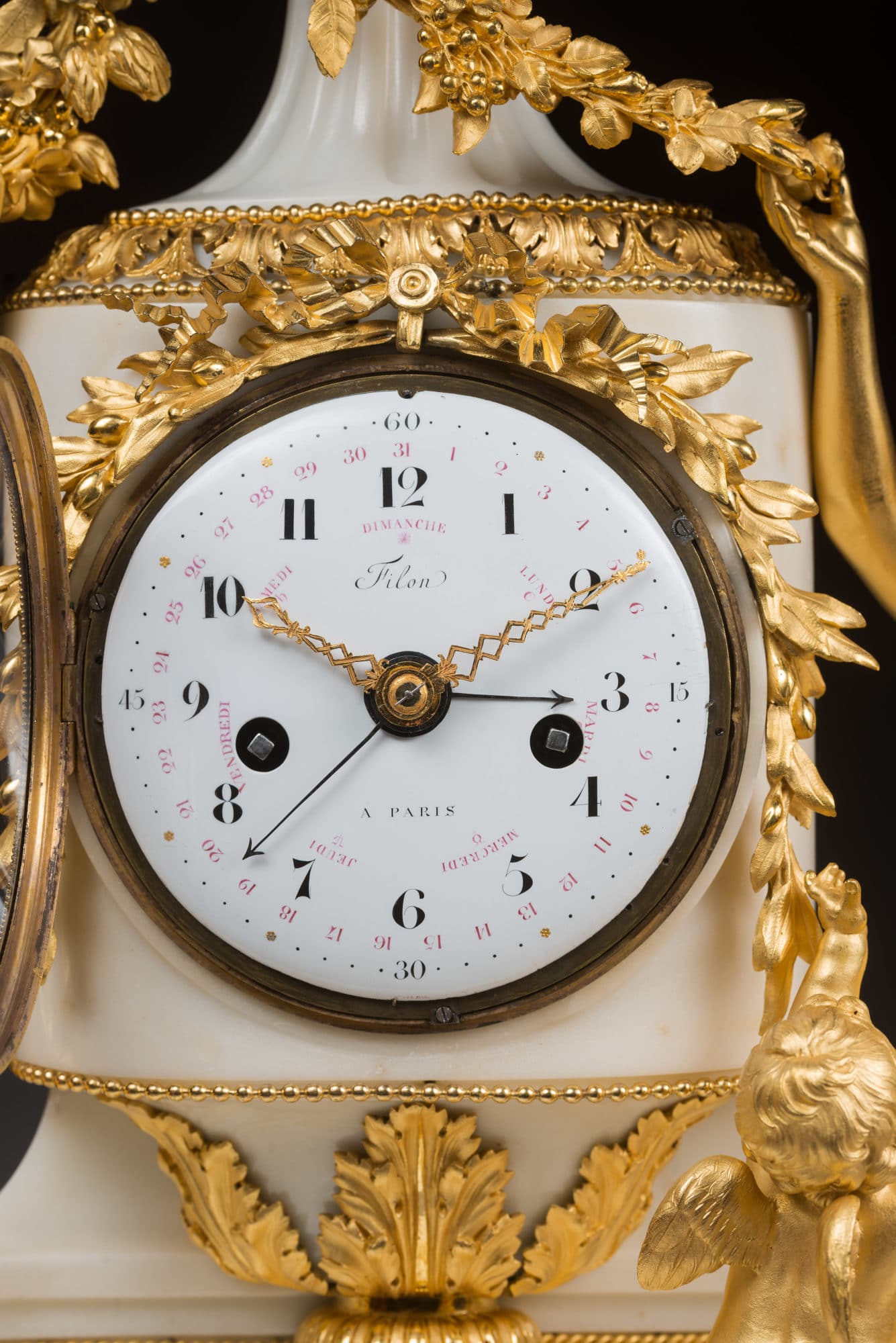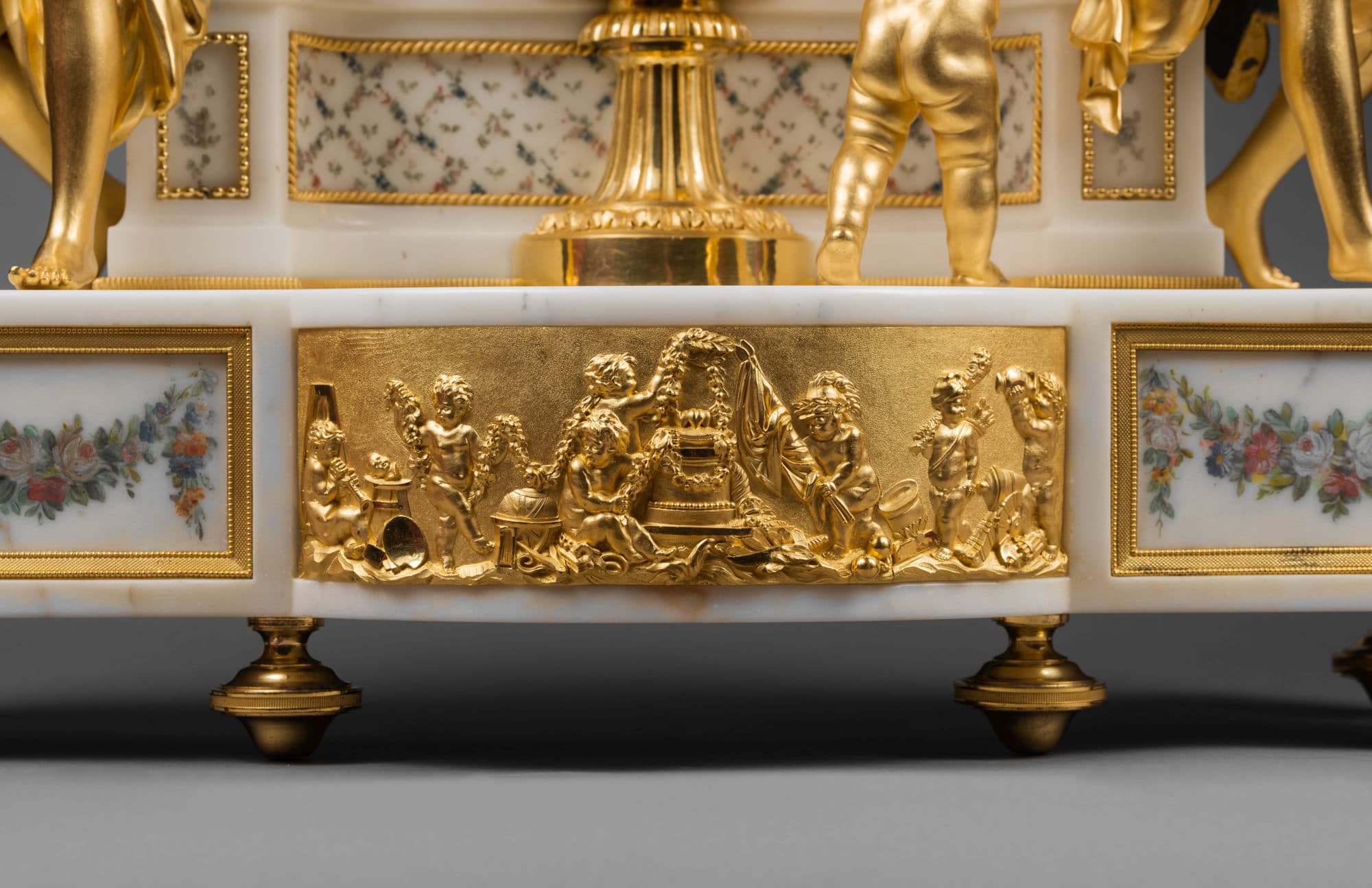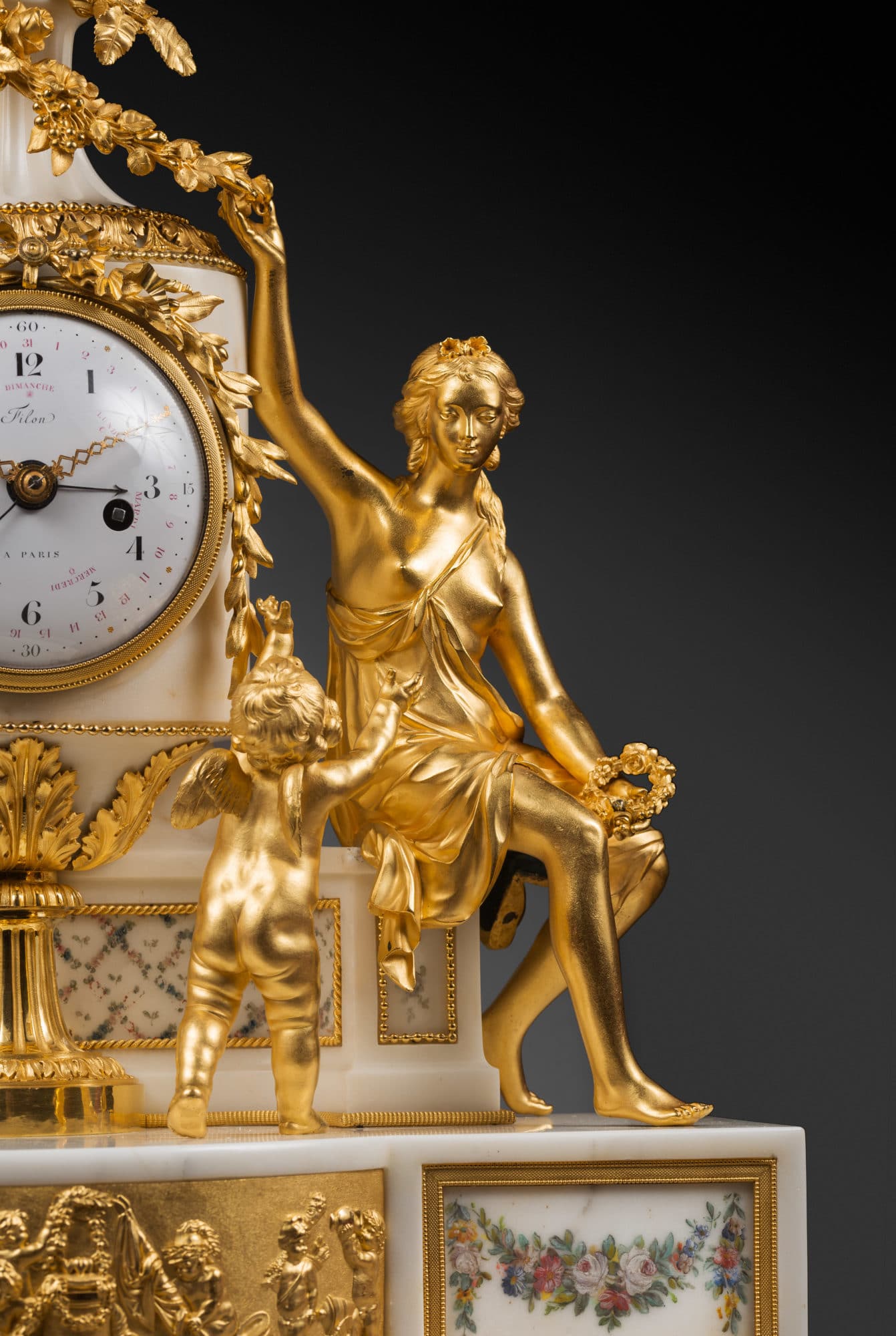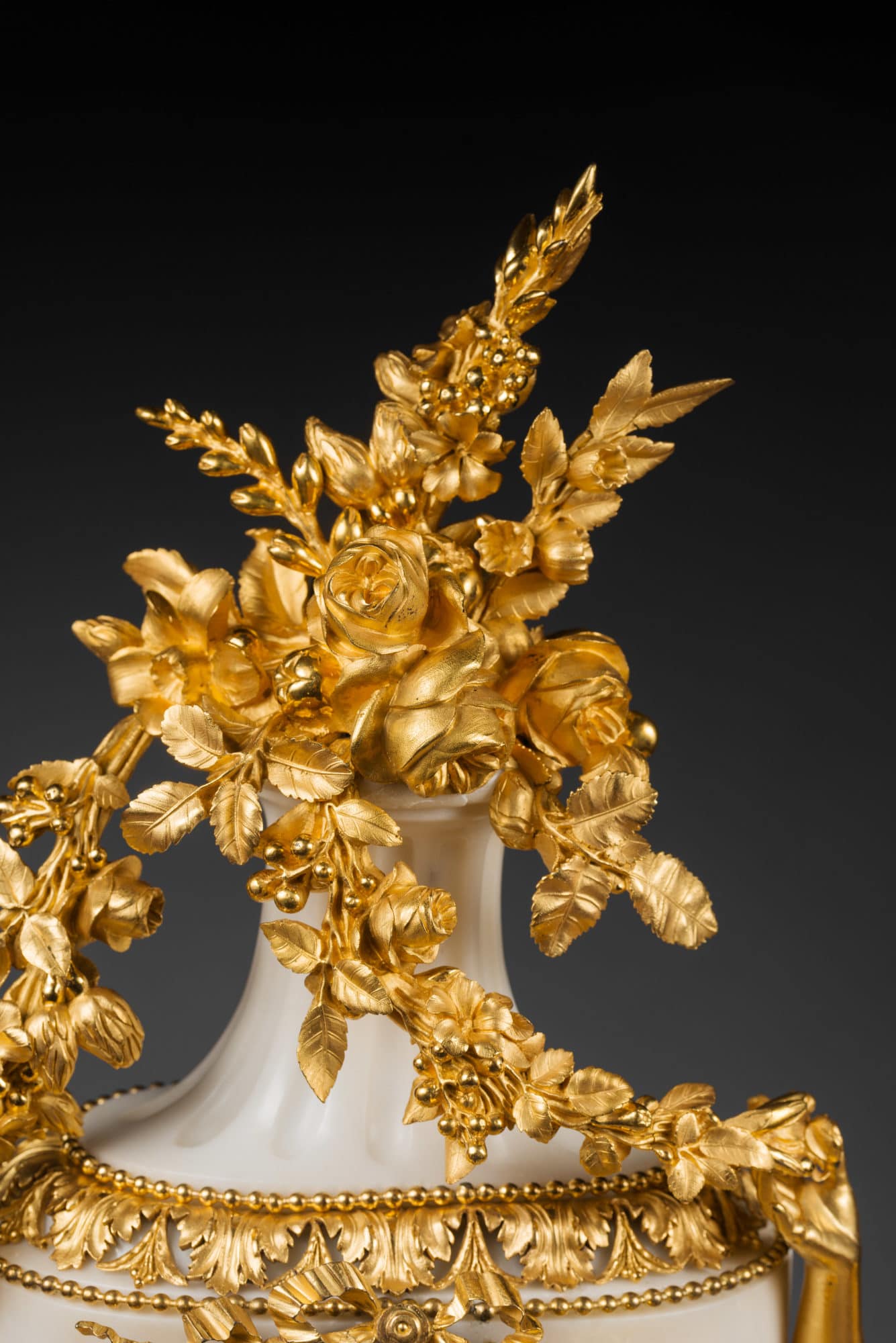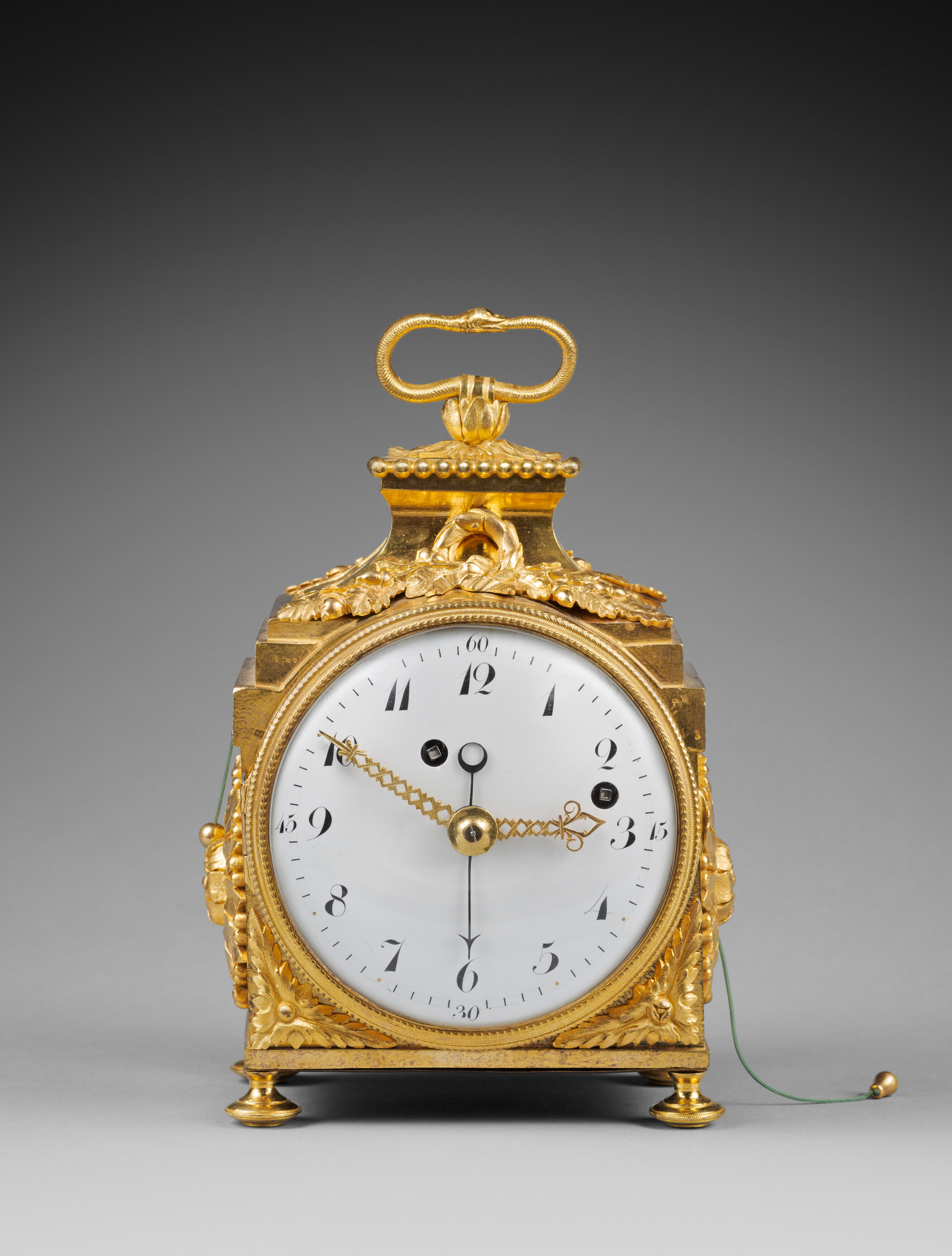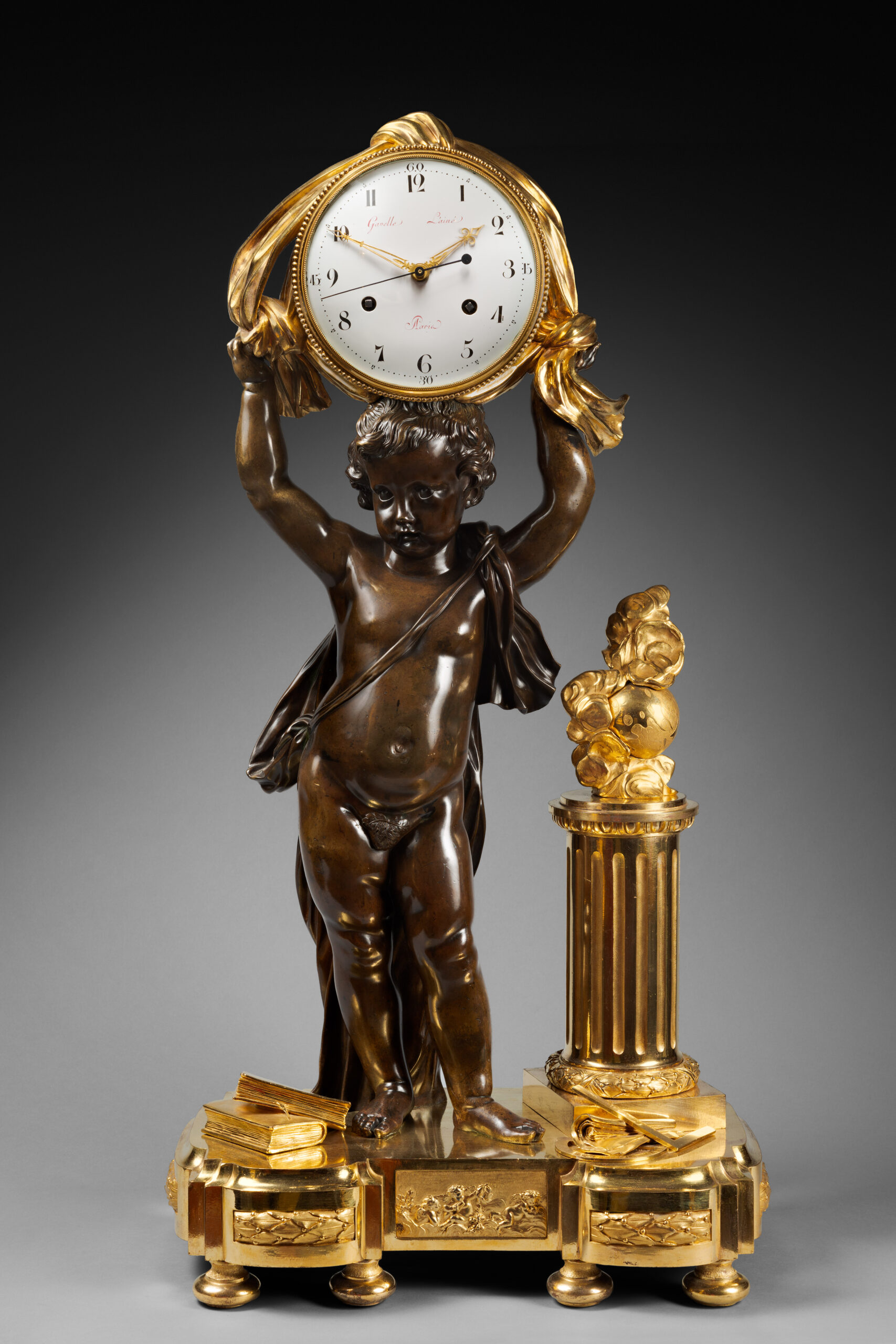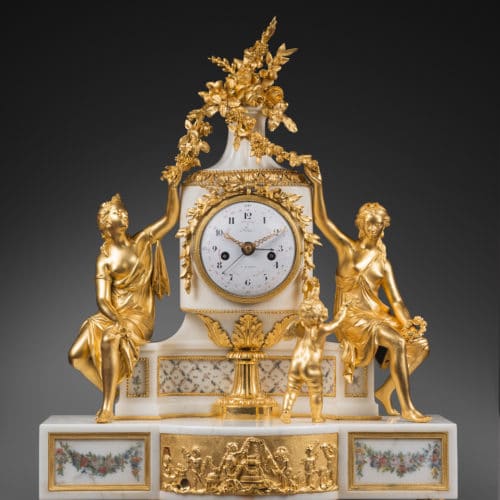Rare Gilt Bronze and White Marble Mantel Clock
“Love Crowned by the Graces”
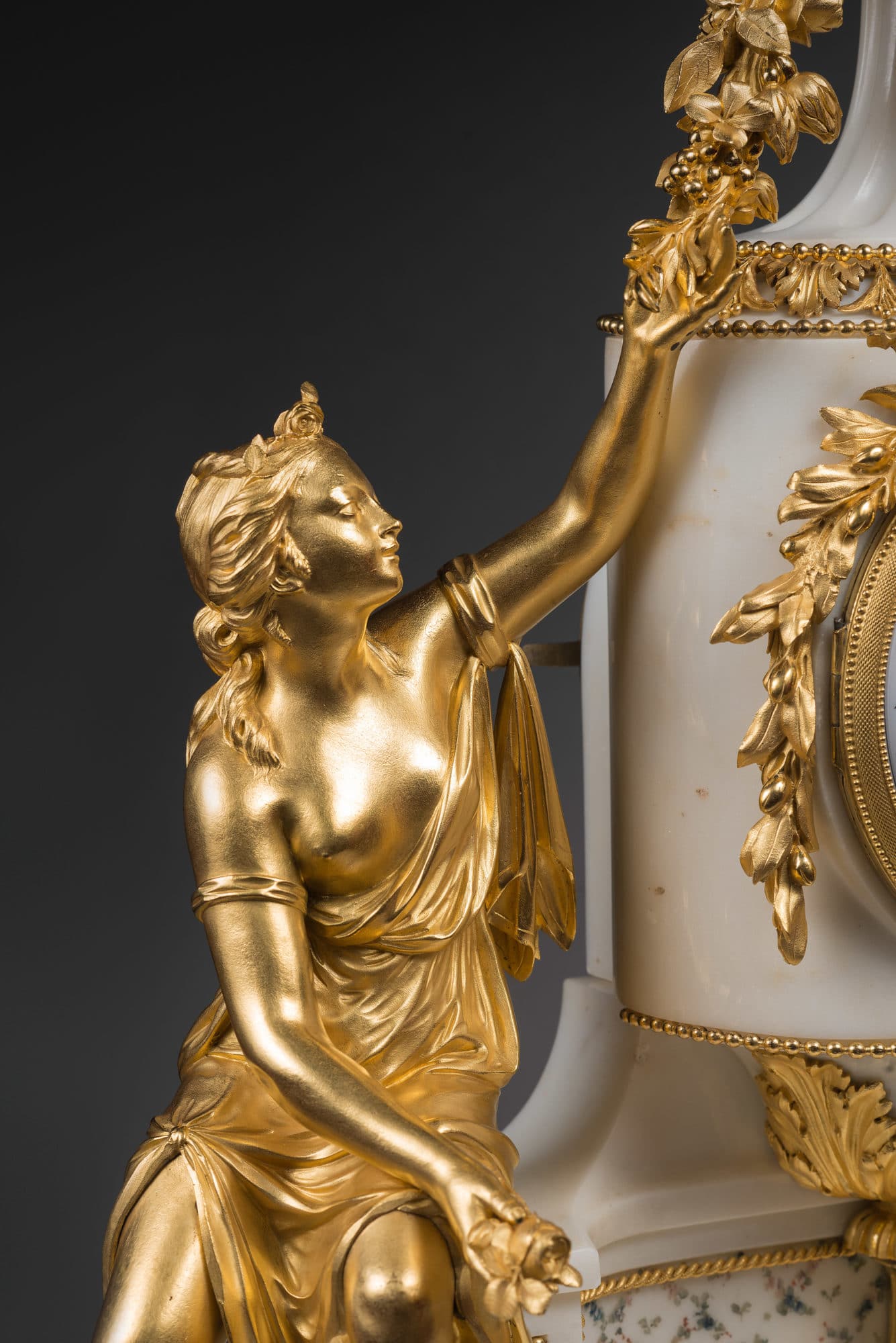
Dial signed « Filon à Paris » by the clockmaker Charles-Cécile Filon
Dial signed « COTEAU » by the enameler-painter Joseph Coteau
Paris, Louis XVI period, circa 1785
In chased and gilt bronze, the white marble partially painted with polychrome motifs, the white enamel dial, indicating the hours, minutes, seconds and the date, signed “Filon À PARIS” and “COTEAU” in the lower portion under the bezel, set in an urn that is surmounted by a flower bouquet and flanked by two nymphs and a putto, the base with a central curved and slightly protruding section, features a bas relief frieze depicting putti at an altar of Love, flanked by painted polychrome flower swags. The clock is raised upon toupie feet.
Discover our entire collection of antique mantel clocks for sale online or at the gallery.
La Pendulerie is the specialist in fine and rare antique clocks, based in Paris.
Bibliography:
– Tardy, La Pendule Française, Vol. II, p. 250 fig. 1 H. Ottomeyer / P. Proschel et al., Vergoldete Bronzen, Munich, 1986, Vol. I, p. 250 fig. 4.6.18 P. Kjellberg, Encyclopédie de la Pendule Française du Moyen Age au XXe siècle, Paris, 1997, p. 256 pl. D
A similar clock, formerly in the collection of Pascal Izarn, is illustrated in P. Kjellberg, Encyclopédie de la Pendule Française du Moyen Age au XXe siècle, Paris, 1997, p. 256, pl. D. Another was sold by Christies New York, Segoura collection, on October 19, 2006, lot 443 ($ 60.000).
Most of the other known models feature gilt bronze bas-reliefs instead of painted marble. This is the case for the example in the Victoria and Albert Museum in London, which is illustrated in Tardy, La Pendule Française, vol. II, p. 250 fig. 1. A further example is in the Château of Fontainebleau.
Charles-Cécile Filon became a master in 1751; his workshop was located in the rue de la Grande Truanderie from 1751 to 1774. Due to his excellent reputation and widespread fame, he was chosen to construct the movement of a regulator invented by Passemant, which stood in the Duke de Choiseul’s study in the Château de Chanteloup (see J-D. Augarde, Les ouvriers du Temps, Genève, 1996, p. 383, fig. 280). During the 18th century, certain of his pieces were mentioned in the probate inventories of lawyer and art collector Nicolas-Philippe de Rebergues, and that of banker Joseph Duruey.
Joseph Coteau (1740 - 1801)
The most renowned enameller of his time, he worked with most of the best contemporary Parisian clockmakers. He was born in Geneva, where he was named master painter-enameler of the Académie de Saint Luc in 1766. Several years later he settled in Paris, and from 1772 to the end of his life, he was recorded in the rue Poupée. Coteau is known for a technique of relief enamel painting, which he perfected along with Parpette and which was used for certain Sèvres porcelain pieces, as well as for the dials of very fine clocks. Among the pieces that feature this distinctive décor are a covered bowl and tray in the Sèvres Musée national de la Céramique (Inv. SCC2011-4-2); a pair of “cannelés à guirlandes” vases in the Louvre Museum in Paris (see the exhibition catalogue Un défi au goût, 50 ans de création à la manufacture royale de Sèvres (1740-1793), Musée du Louvre, Paris, 1997, p. 108, catalogue n° 61); and a ewer and the “Comtesse du Nord” tray and bowl in the Pavlovsk Palace in Saint Petersburg (see M. Brunet and T. Préaud, Sèvres, Des origines à nos jours, Office du Livre, Fribourg, 1978, p. 207, fig. 250). A blue Sèvres porcelain lyre clock by Courieult, whose dial is signed “Coteau” and is dated “1785”, is in the Musée national du château in Versailles; it appears to be identical to the example mentioned in the 1787 inventory of Louis XVI’s apartments in Versailles (see Y. Gay and A. Lemaire, “Les pendules lyre”, in Bulletin de l’Association nationale des collectionneurs et amateurs d’Horlogerie ancienne, autumn 1993, n° 68, p. 32C).
